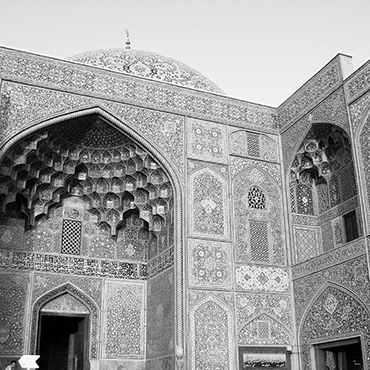THE (NOT SO) ISLAMIC REPUBLIC OF IRAN
Over the past four decades, the Islamic Republic has experienced a dramatic drop in religiosity among its citizens, and this secularization is continuing apace. The number of Iranian citizens who attend mosques has declined to the point that it has become "highly alarming," Iranian Minister of Culture Mehdi Esmaili warned recently. The problem Esmaili highlights is acute; back in February, a senior Iranian cleric revealed that some two-thirds of Iran's 75,000 mosques had been closed as a result of significant declines in attendance. Tellingly, senior Iranian officials have pinned the blame for this decline on societal factors and governmental mismanagement, among them the "humiliation of people in the name of religion," the "falsification of religious concepts and teachings," and "depriving people of a decent life and creating poverty in the name of religion."
In recent months, regime officials have redoubled their efforts to arrest this slide. In August, Esmaili himself floated a proposal to begin holding cultural and artistic activities in mosques as a way of luring Iranians back to places of worship. (Iran International, December 12, 2023)
IRAN STEPS UP PRESSURE ON AFGHAN REFUGEES
The Islamic Republic is becoming increasingly inhospitable for Afghans. Earlier this month, the Iranian government confirmed that it had imposed a ban on Afghans living in, traveling to, or working in more than half of its national provinces. The ban, which affects millions of Afghan refugees and migrants now residing within the Islamic Republic, follows an October proclamation by Interior Minister Ahmad Vahidi that Tehran would deport all "illegal" migrants – most of whom have fled to Iran to escape the return of the Taliban in neighboring Afghanistan. An estimated five million Afghans currently live in the Islamic Republic, at least half of whom do not have proper documentation and are at risk of deportation by Iranian authorities. (Radio Free Europe/Radio Liberty, December 4, 2023)
IRAN'S REGIME DOUBLES DOWN ON GENDER APARTHEID
A year after the death in official custody of Kurdish-Iranian activist Mahsa Amini sparked the "women, life, freedom" protests, Iranian authorities are tightening restrictions on the country's female population still further. Iran's parliament, the majles, has passed a new measure expanding penalties for women who don't comply with the country's religious dress code. Approved for a three-year trial period, the bill lays out that women failing to wear a hijab or clothing deemed appropriate by the country's clerical regime could face jail terms of between five and ten years. Tellingly, the bill also equates such non-compliance with foreign subversion, delineating that such failures are punishable if carried out "in co-operation with foreign or hostile governments, media, groups or organisations." Under the measure, anyone who "mocks" the hijabon social media or other outlets would face stiff fines, and be barred from leaving the country for up to two years. The bill now awaits approval by the country's Guardian Council to become law. (The National, September 20, 2023)
THE IRAN-HAMAS RELATIONSHIP, EXPLAINED
Hamas' horrific October 7th assault on southern Israel marked the single largest killing of Jews since the Holocaust, and touched off a major Israeli military offensive in the Gaza Strip. Since then, speculation has swirled over what role the Iranian regime played in organizing, masterminding and otherwise enabling the attack. However, that, notes Washington Institute counterterrorism expert Matthew Levitt, is the wrong question. "Ultimately, the details of Iran’s role in the plot itself will emerge. But this much is already clear: Iran has funded, armed, trained, and provided intelligence to Hamas for decades," Levitt writes in the Jerusalem Strategic Tribune. "Though Hamas has multiple income streams, funding from Iran has been especially important for the group's military and terrorist structures."
"Today, US and Israeli officials estimate that Iran provides Hamas at least $70m-$100m a year," Levitt notes. "Iranian funding of Hamas has over time sustained the group and built up the group's terrorist capabilities. Iran's terrorist training programs, and its consistent effort to arm Hamas over the years, are the reason Hamas has been able to carry out attacks targeting Israel including the October 7 massacre." (Jerusalem Strategic Tribune, November 2023)
Want these sent to your inbox?
Subscribe
Iran Democracy Monitor No. 231
Related Categories:
Human Rights and Humanitarian Issues; Intelligence and Counterintelligence; Islamic Extremism; Terrorism; Warfare; Afghanistan; Iran; Israel

